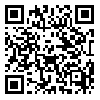

BibTeX | RIS | EndNote | Medlars | ProCite | Reference Manager | RefWorks
Send citation to:
URL: http://hcjournal.arums.ac.ir/article-1-331-en.html

 , A Ramezankhani
, A Ramezankhani 
 , K Doostifar *
, K Doostifar * 
 , S Motesaddi Zarandi
, S Motesaddi Zarandi 
 , T Marashi
, T Marashi 
 , SH Ghanbari
, SH Ghanbari 
 , N Shakeri
, N Shakeri 

�
Background & objectives:�Dust or particulate matters (PM) is one of the most important air pollutants that are considered as a risk factor for health. Change of behaviors is crucial in prevention of health related risk factors. One of the models for behavior change in individual level is Health Belief Model (HBM). The aim of this study was to investigate the effect of education based on health belief model on the maintenance of protective behaviors in exposure to dust air pollution.
Methods:�Through a semi-experimental study design, 200 teachers were randomly assigned into intervention and control groups (n=100, in each group) in Ahvaz, 2013. A researcher-made questionnaire consisting of four parts of demographic characteristics, knowledge, and health belief model’s constructs and protective behaviors in exposure to dust pollution was used for data gathering. The questionnaire was completed by both groups before intervention. The educational program was designed based on the results of pre-test and then the intervention group received the education for 4, 90 minutes sessions with lecture and discussion. The data were collected immediately and two months after the intervention and were analyzed with SPSS-16, by descriptive and analytical statistics. P-values less than 0.05 were considered significant.
Results:�The findings showed that knowledge (p<0.001) and the mean scores of health belief model constructs including perceived susceptibility (p<0.001), perceived severity (p<0.001), perceived benefits (p<0.001), perceived barriers (p<0.002), perceived self-efficacy (p<0.001), cue to action (p<0.007) and behavior (p<0.001) significantly increased in the case group compared to control group immediately and two months after the intervention.
Conclusion: Planning and implementation of educational program based on Health Belief Model can be effective in promoting and maintenance of protective behaviors of teachers exposed to dust particles.
| Rights and permissions | |
 |
This work is licensed under a Creative Commons Attribution-NonCommercial 4.0 International License. |
